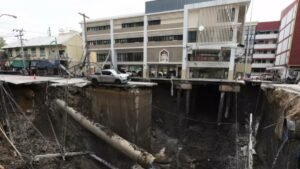The map that might just revolutionize how we view Africa and the world

For centuries, the Mercator projection map has dominated classrooms, offices, and institutions around the world. However, its distortion makes Africa visually smaller than it really is. Today, the African Union demands a change that is not just cartographic, but symbolic and political: to show the continent in its true dimension.
A symbol beyond cartography

“A map is not an innocent drawing,” repeat the supporters of the change. The backing of the AU marks a milestone by turning a cultural demand into continental policy. Representing Africa as smaller than Europe or Greenland reinforces the perception of marginality, despite being the second largest continent on the planet.
For academics like Carlos Lopes, from the University of Cape Town, the change is not just visual: it is an act of dignity, education, and diplomacy. Cartographic correction also implies reconfiguring how African relevance is perceived on the global stage.
Why Mercator distorts

Created in 1569 for maritime navigation, the Mercator projection enlarges territories near the poles and reduces the size of masses near the equator. That’s why Greenland appears the same size as Africa when in reality it is 14 times smaller.
Although the original intention was not political, the persistent use of this projection consolidated an unbalanced view of the world. As explained by the co-founder of the Equal Earth map, Fara Ndiaye, “incorrect maps undermine trust and limit the capacity for action of new generations.”
Equal Earth: an emerging alternative
The Equal Earth map, developed in 2018, offers a more faithful representation of the continents. NASA and the World Bank already use it in certain projects, and Google Maps has incorporated the 3D globe in its desktop version.
For Ndiaye, the key is for the change to start in Africa: for children to grow up seeing a map where their continent is not diminished. But it also points to a global transformation: if the whole world adopts fairer maps, it contributes to a more balanced and diverse collective imaginary.
A debate that transcends borders
The support of the African Union opens an international conversation: what other inherited symbols perpetuate colonial visions of the world? Correcting the map will not erase inequalities, but it will dismantle a persistent bias. And it will remind us that the Earth, round and shared, must be represented with the same justice that we demand in our human relationships.
Source:







